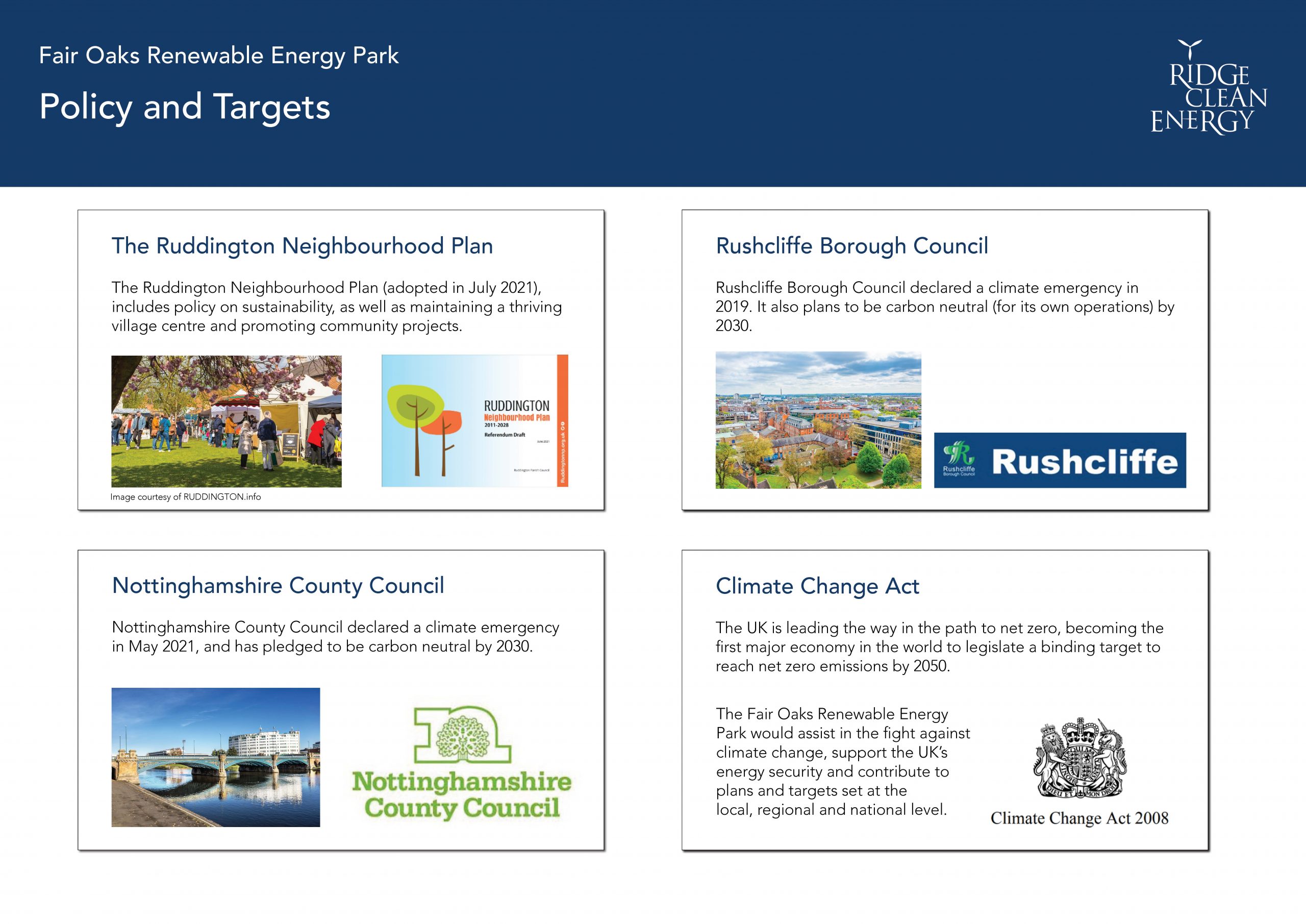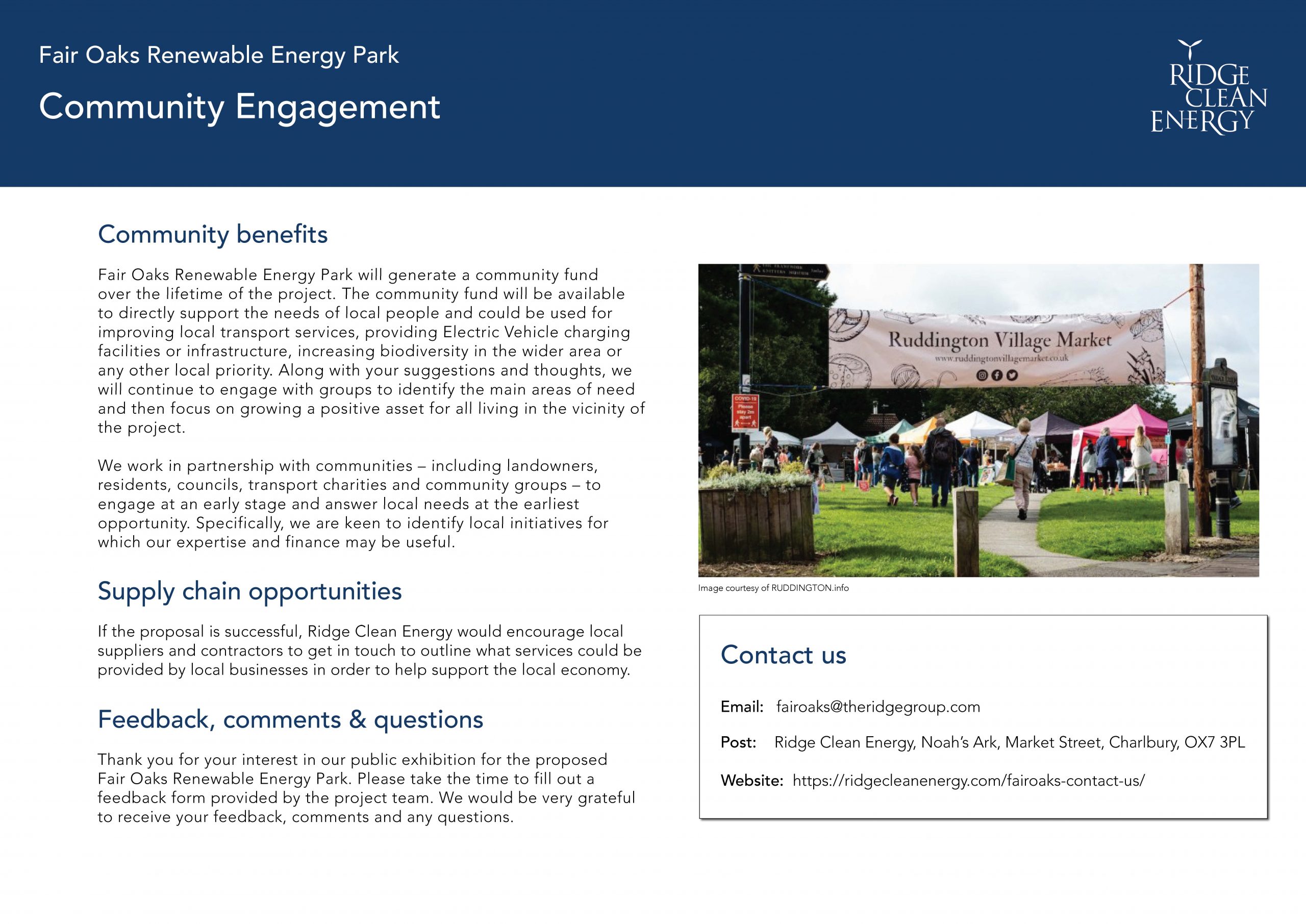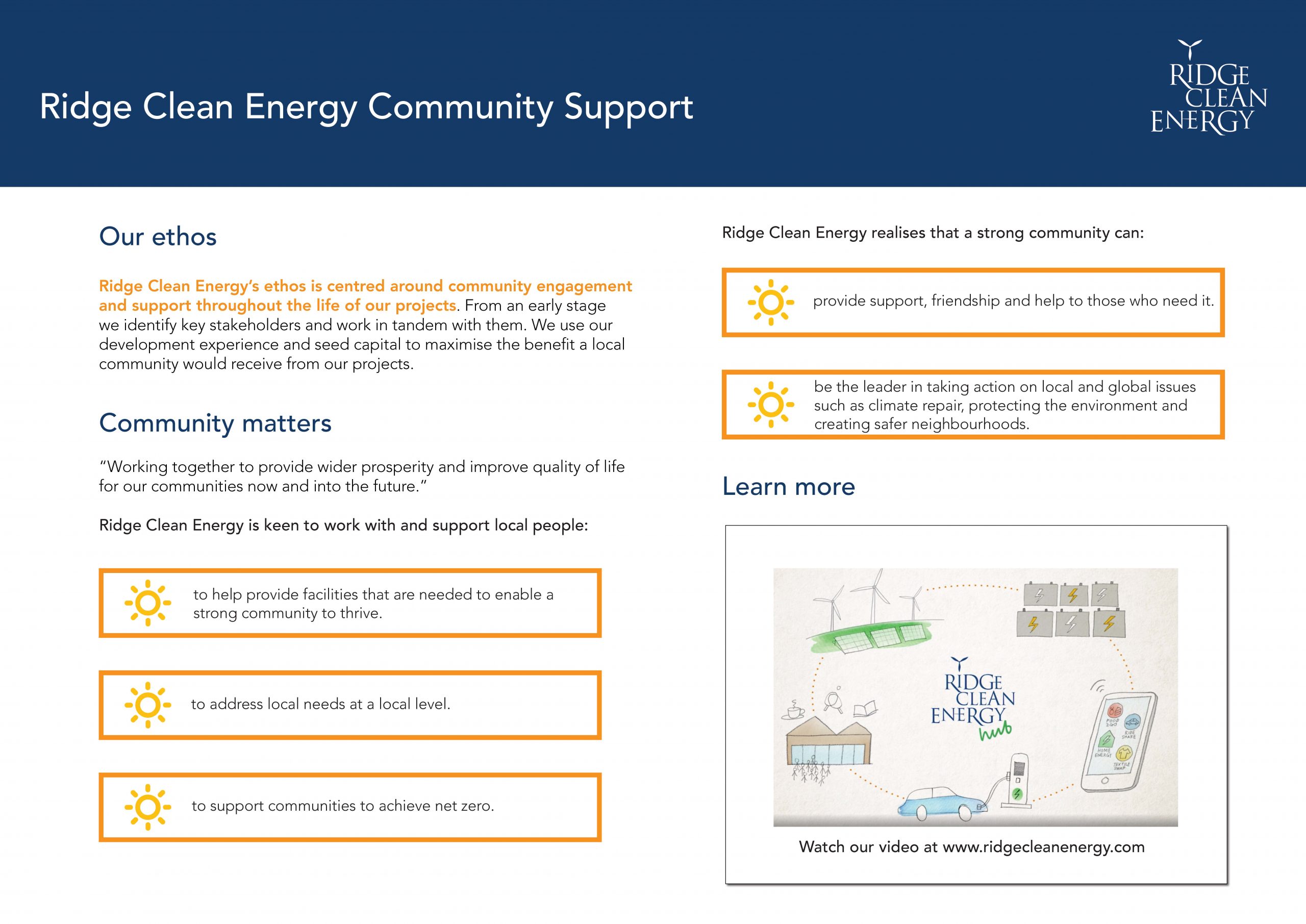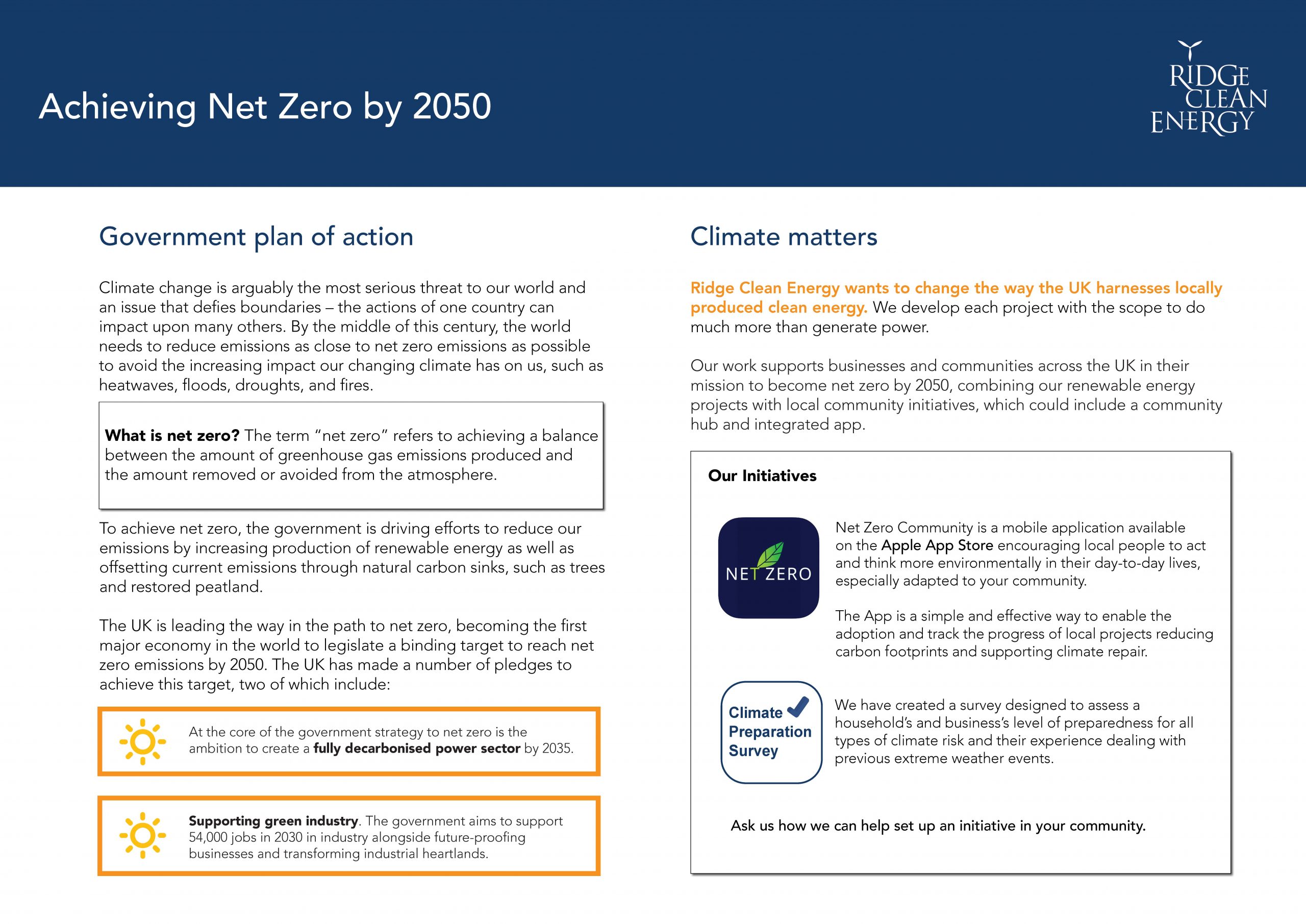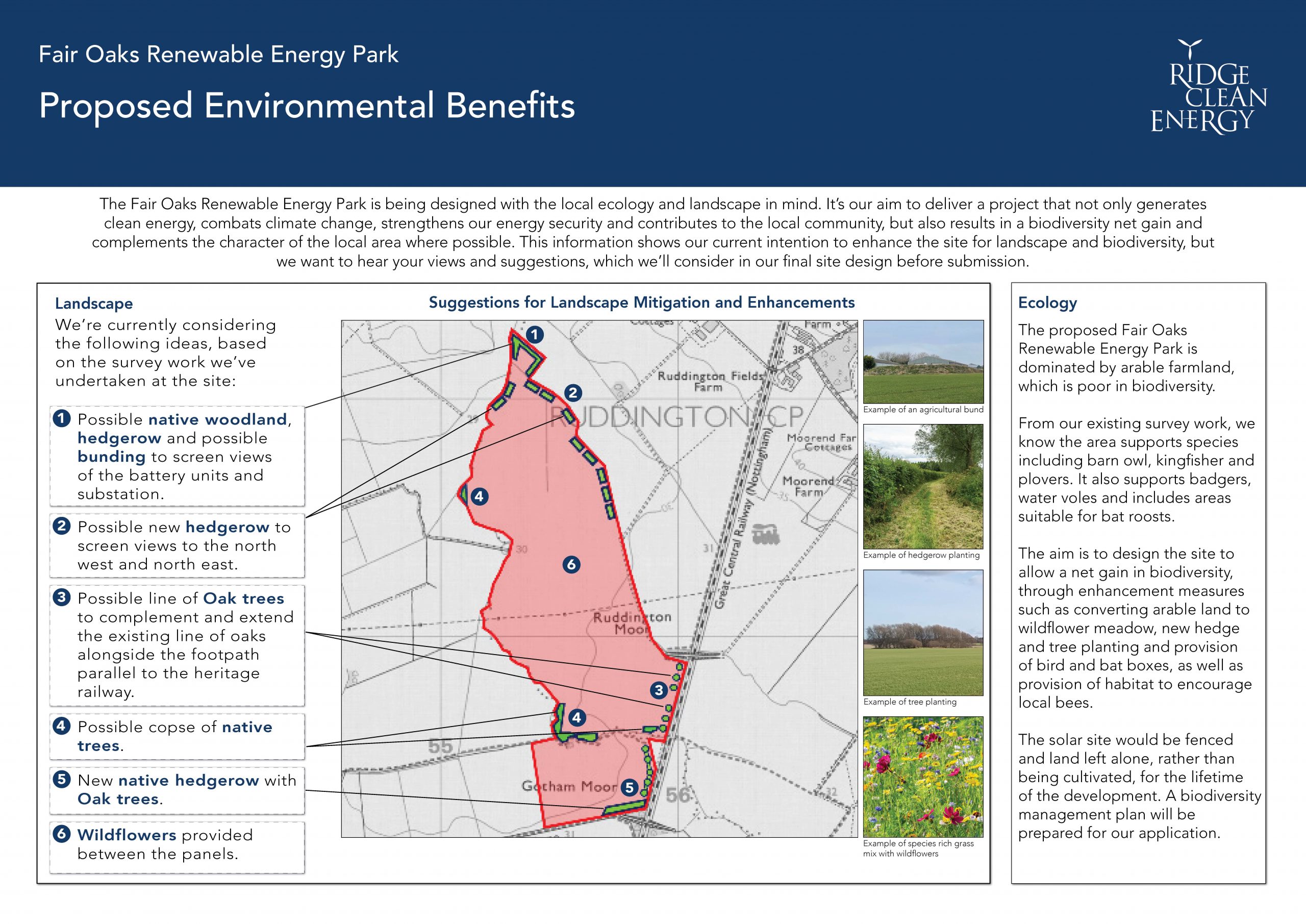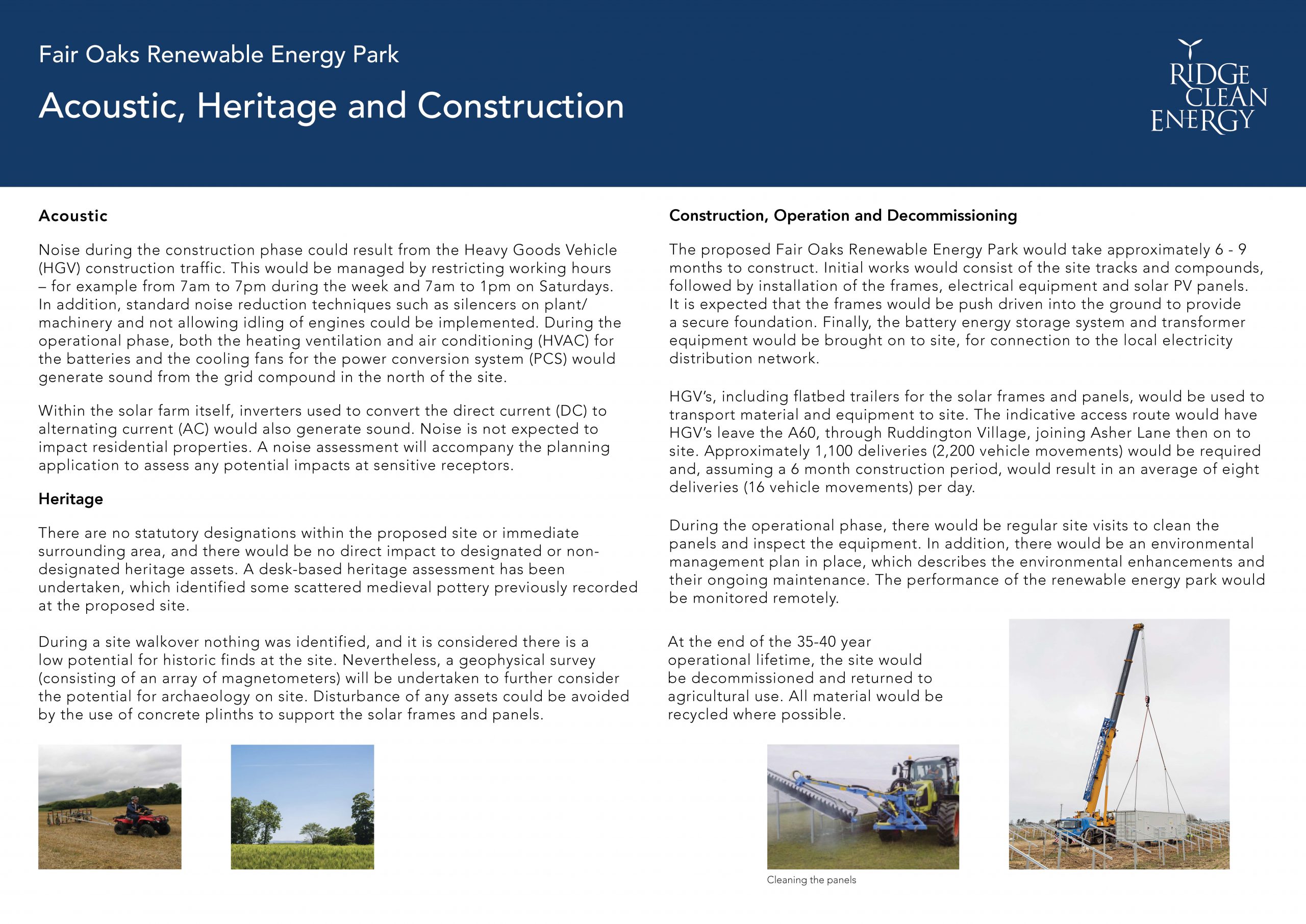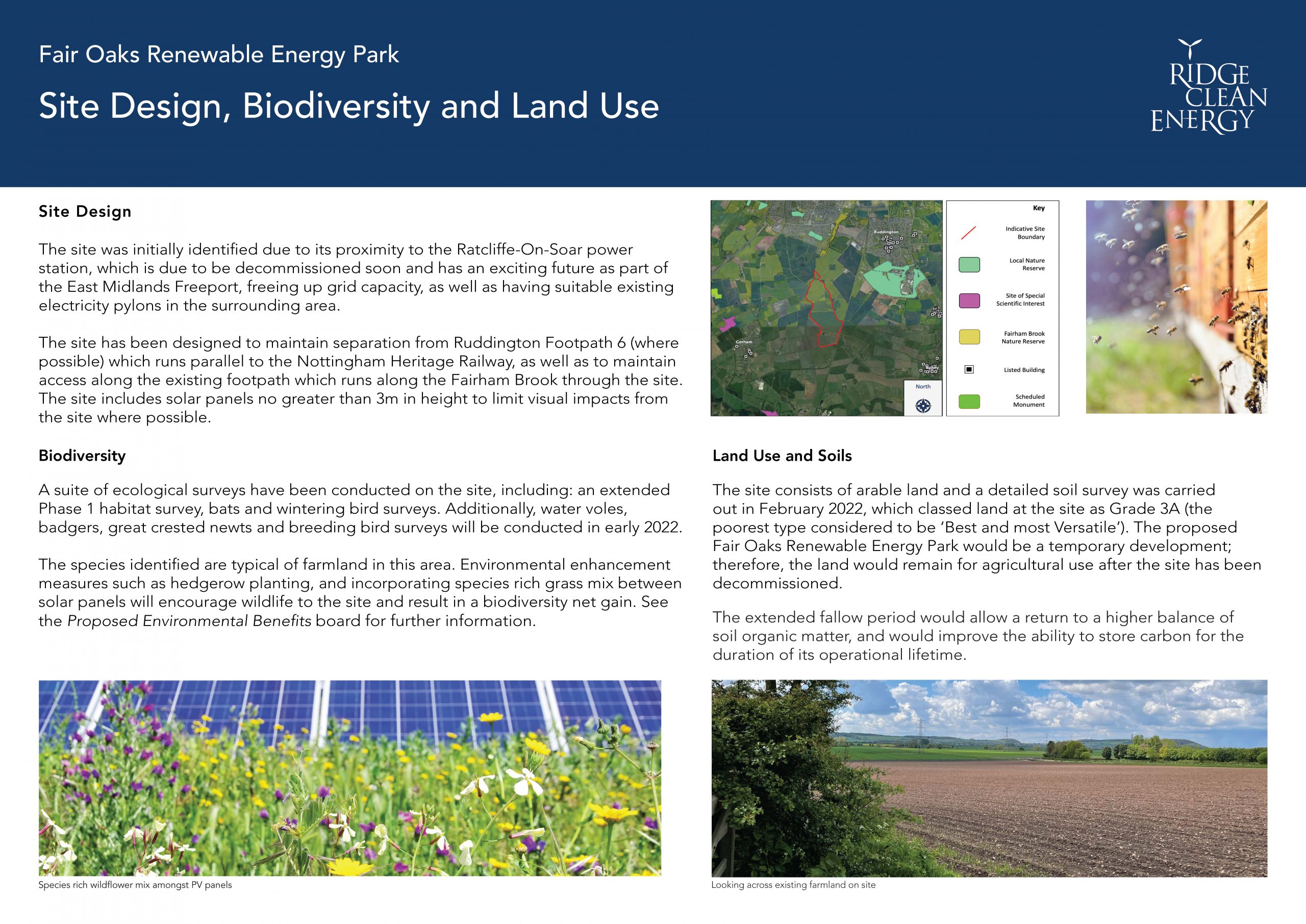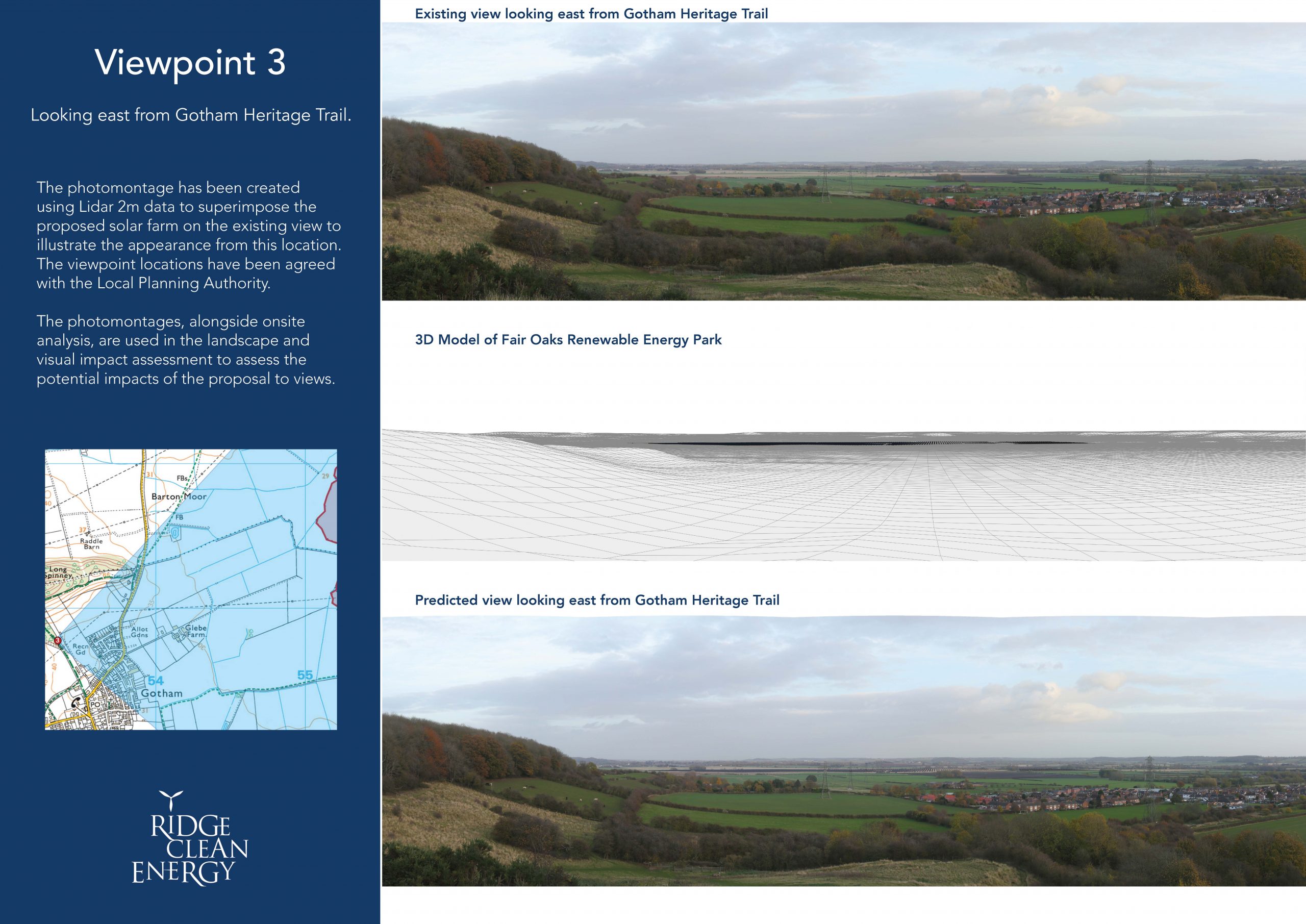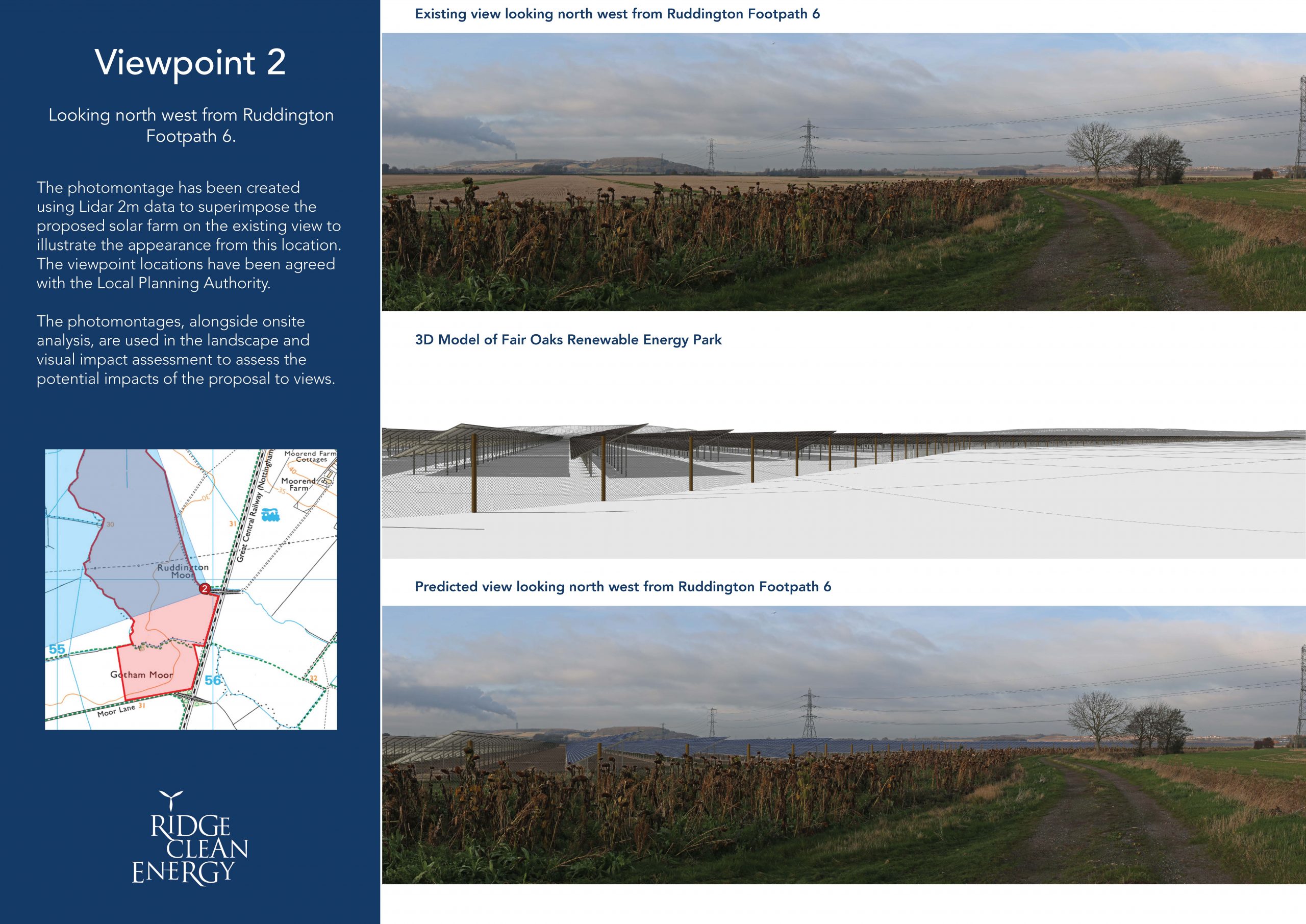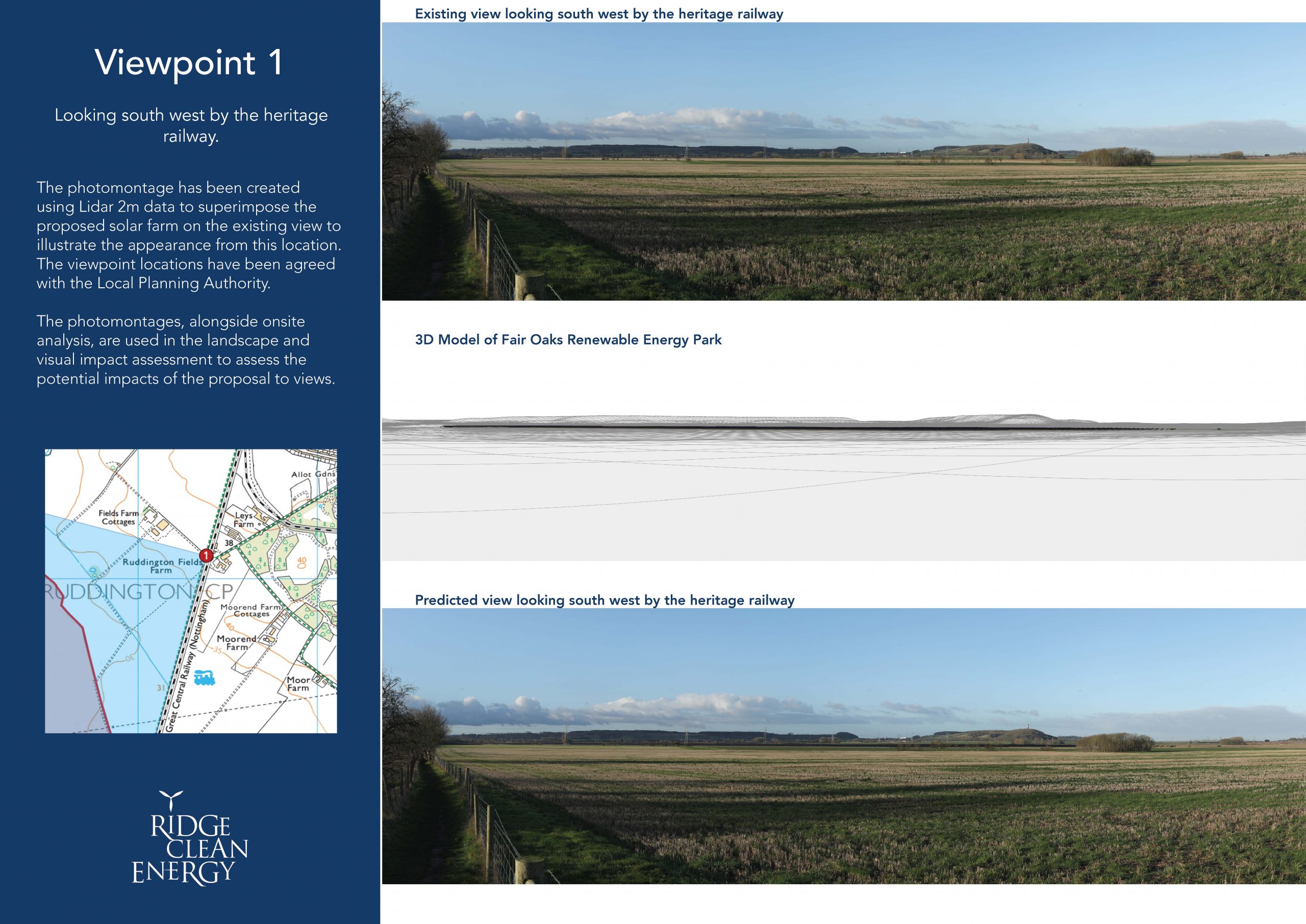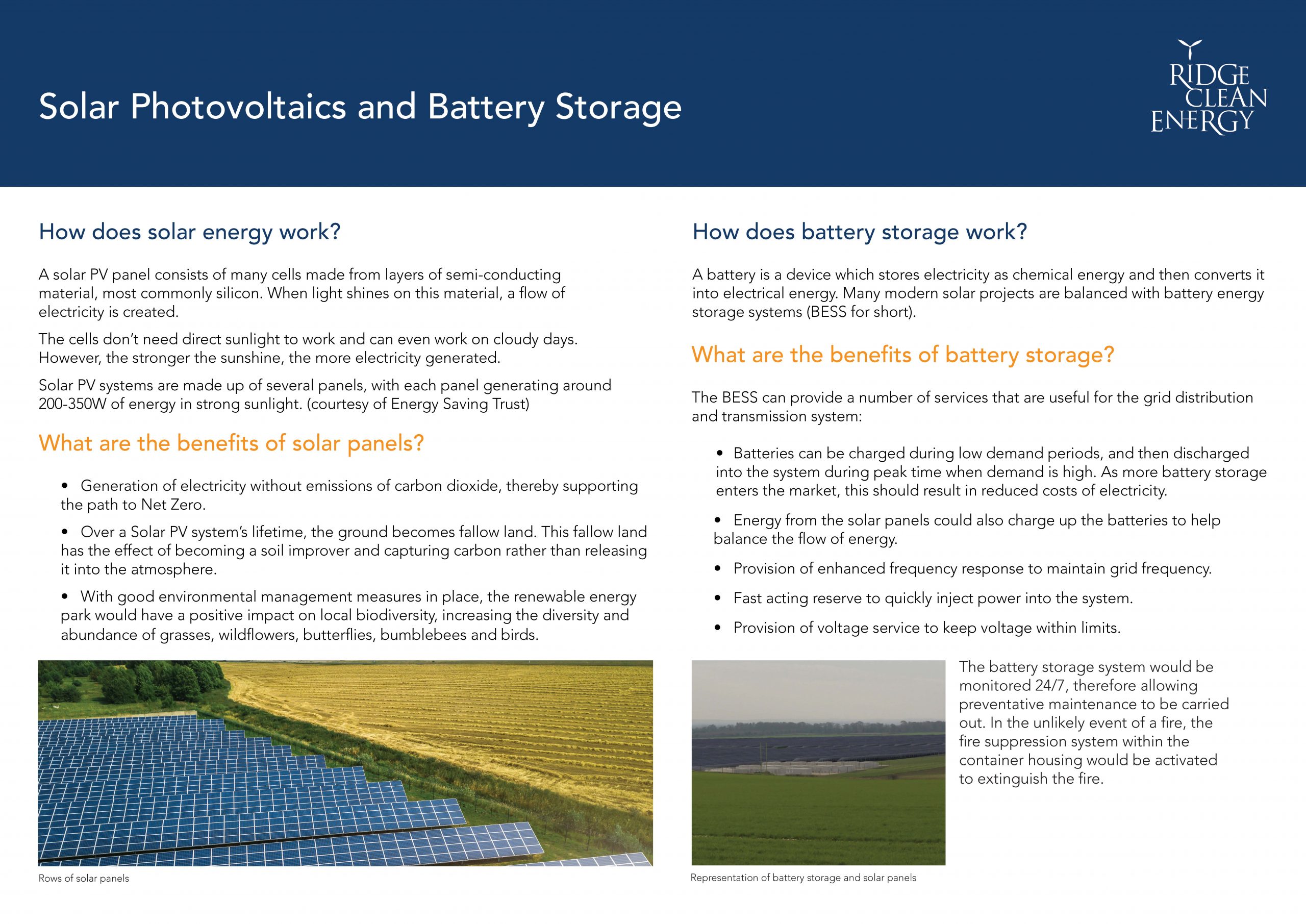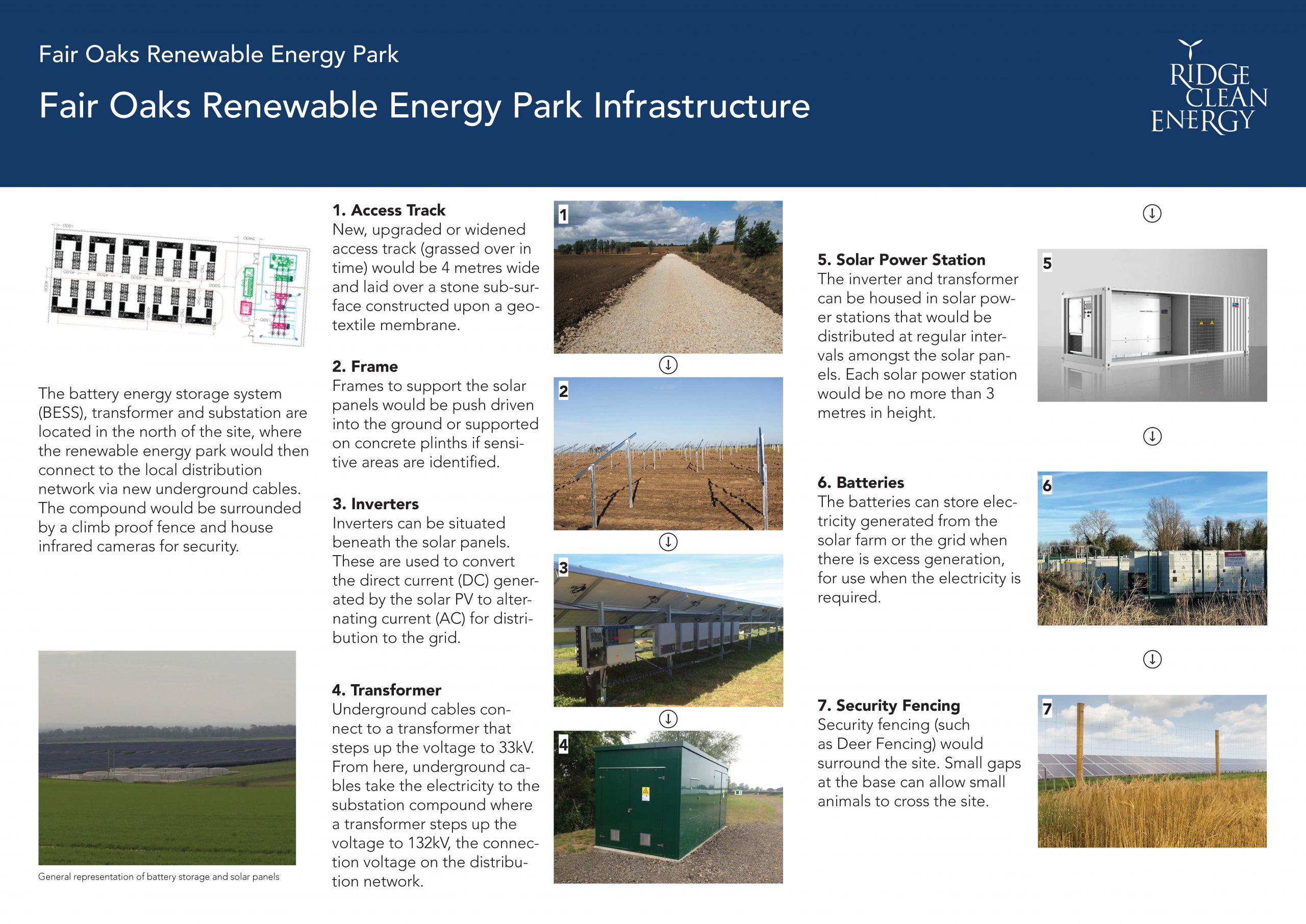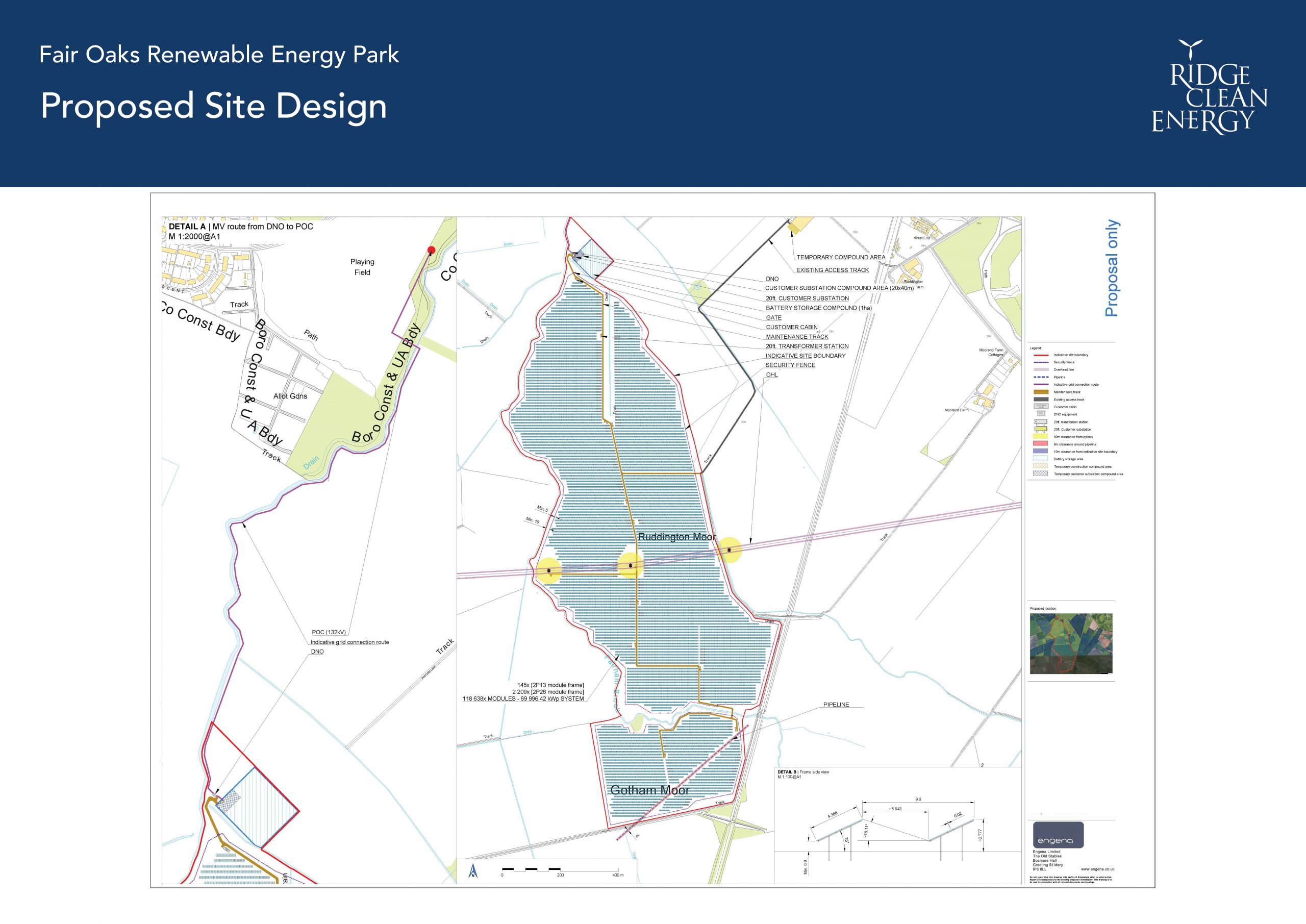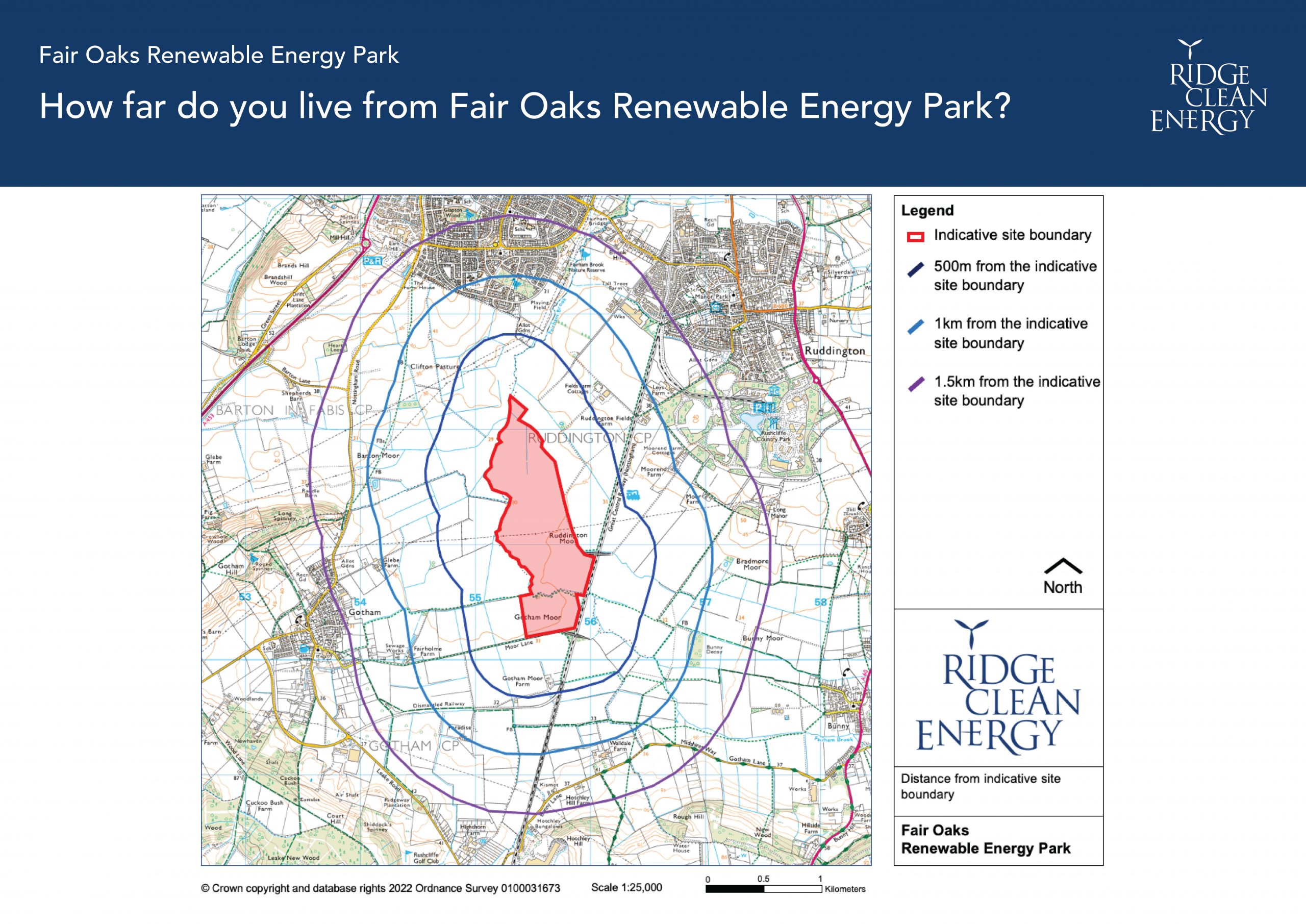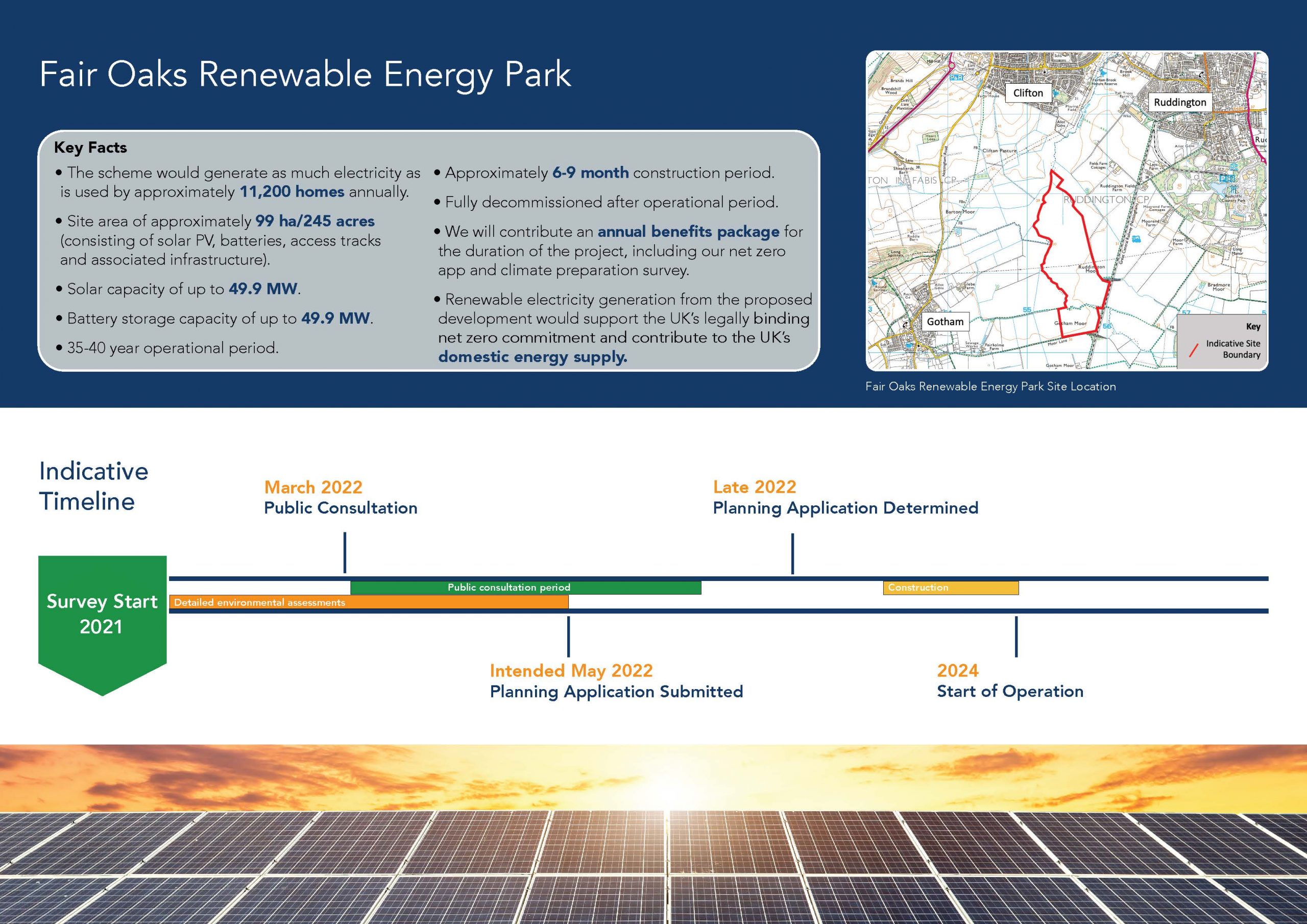Introduction
On 2nd October 2023, Ridge Clean Energy received planning permission for the Fair Oaks Renewable Energy Park, consisting of a solar farm and battery energy storage system, on land to the south west of Ruddington Village, Nottinghamshire.
The progress of the project will be updated on this website, posting news on:
- The Project
- Project Timeline
- Consultation
- Community Partnership
You can contact the project team here with comments, questions or ideas.
View Site Boundary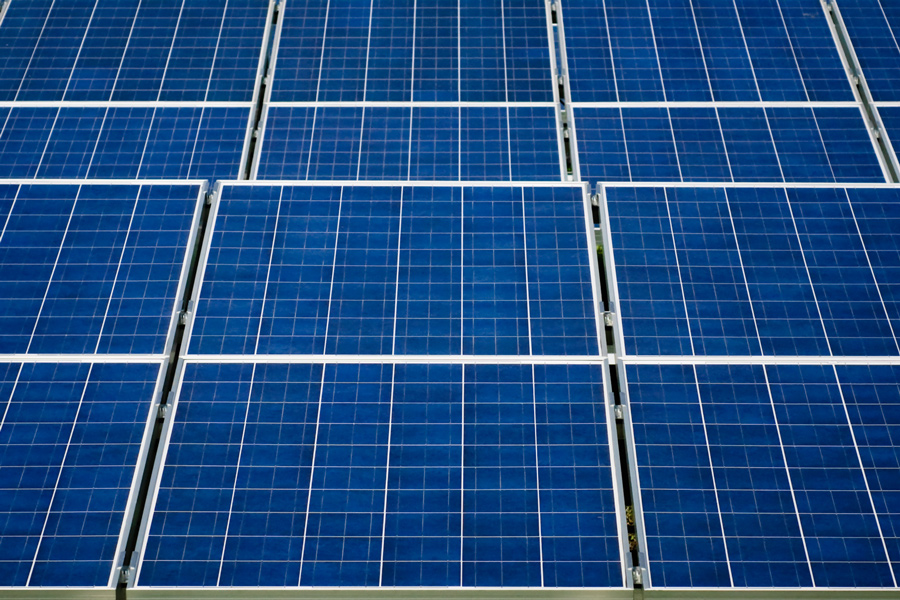
Project Outline
- The project will be located on privately owned arable land approximately 1.3km south west of Ruddington Village.
- The project will generate up to 49.9MW of solar photovoltaic electricity.
- The project will host up to 49.9MW of BESS (Battery Energy Storage System).
- It is currently estimated that the solar farm will generate the equivalent electricity needs of approximately 11,200 Nottinghamshire homes (based on average domestic consumption per household of 3900kWh p.a., DBEIS 2020).
- From the displacement of electricity generated from fossil fuel powered generation, the proposed development will offset the emissions of a significant quantity of pollutants. This reduction in emissions will contribute to the national legislation of net zero emissions by 2050, as well as the climate emergency declared by Rushcliffe Borough Council and Nottinghamshire County Council.
- The project will result in a 75% net gain in habitat, through new through new ecological and enhanced planting measures, including beehives.
- Once the renewable energy park is operating, funding will be made available to the local community to help fund community initiatives.
Access, Infrastructure & Surveys
Infrastructure
A range of infrastructure will be required as part of the new renewable energy park, which will include ground-mounted solar panels, inverters, a Battery Energy Storage System (BESS), transformer units, switch gear and substation, and temporary construction compounds.
Surveys
Our proposals and designs for the site were guided by data gathered during surveys, information provided by the community, technical assessments, and by advice provided by independent environmental consultants. Surveys began in September 2021 and continued across 2022. We continue to monitor this survey undertaken.
Environmental Impact Assessment (EIA)
Ridge Clean Energy took the decision in early 2022 to ‘volunteer’ an EIA for our application. An Environmental Statement was submitted as part of a suite of submission documents to assist Rushcliffe Borough Council to determine the application.
Solar Generation
49.9MW
Battery Storage
49.9MW
Homes Powered
Equivalent amount of power as is used by 11,200 homes
Project Timeline
|
September 2021 - Commencement of Surveys In September 2021 we started our ecology survey work. |
|
 |
 |
|
November 2021 - Presentation of Ruddington Parish Council In November 2021 we presented our initial site concept to Ruddington Parish Council. This was a great opportunity to get a better understanding of the local community. |
|
 |
 |
|
March 2022 - Two Public Exhibitions Held On the 22nd and 25th of March, we hosted two public exhibitions at St. Peter’s Rooms, Ruddington Village. |
|
 |
 |
|
February 2023 - Planning Application Submission We submitted the application for planning permission in early 2023. |
|
 |
 |
|
October 2023 - Planning Determination On 2nd October 2023 we received planning permission from Rushcliffe Borough Council. |
|
 |
 |
|
Planning Condition Discharge Ongoing |
|
 |
 |
